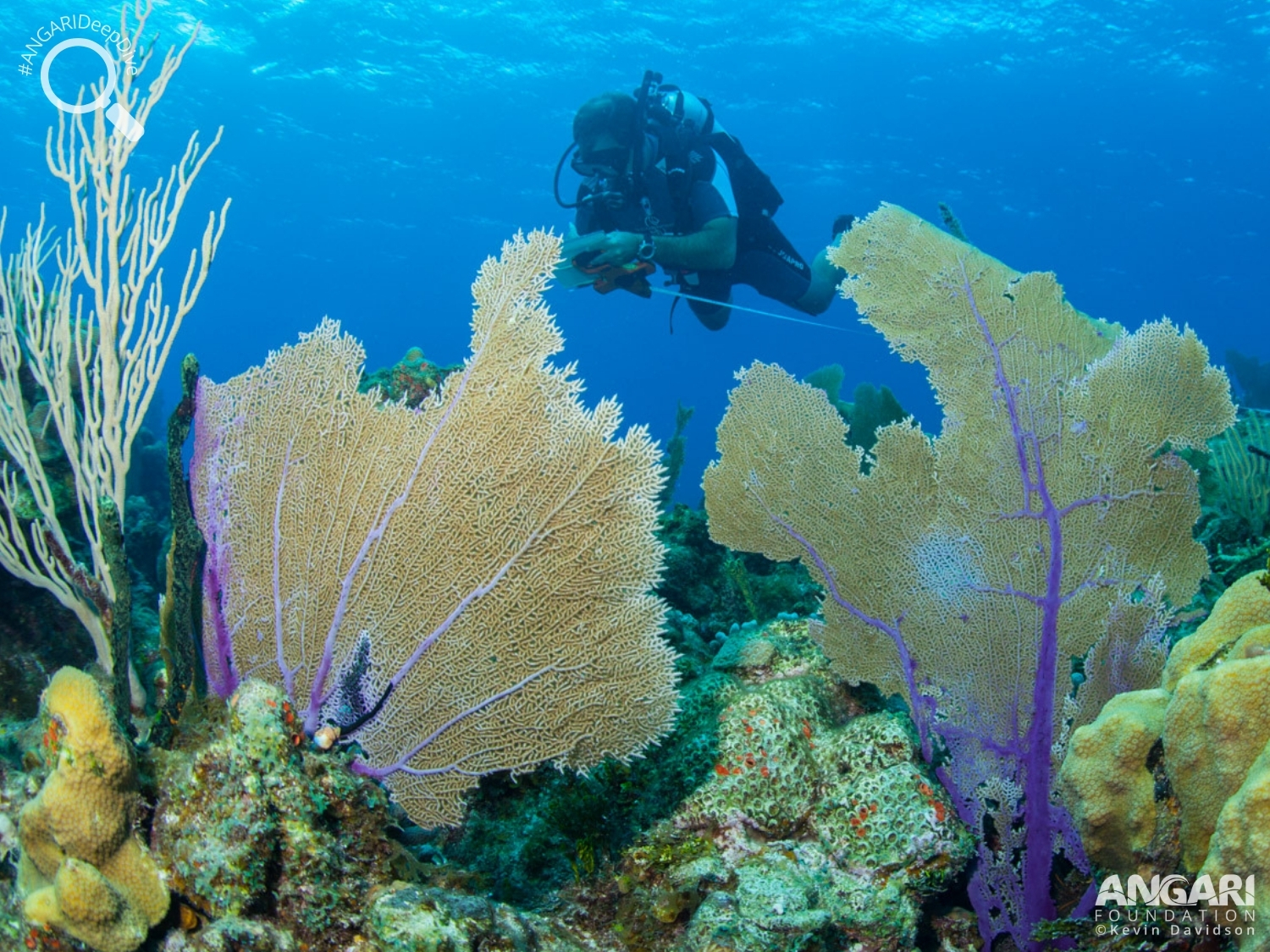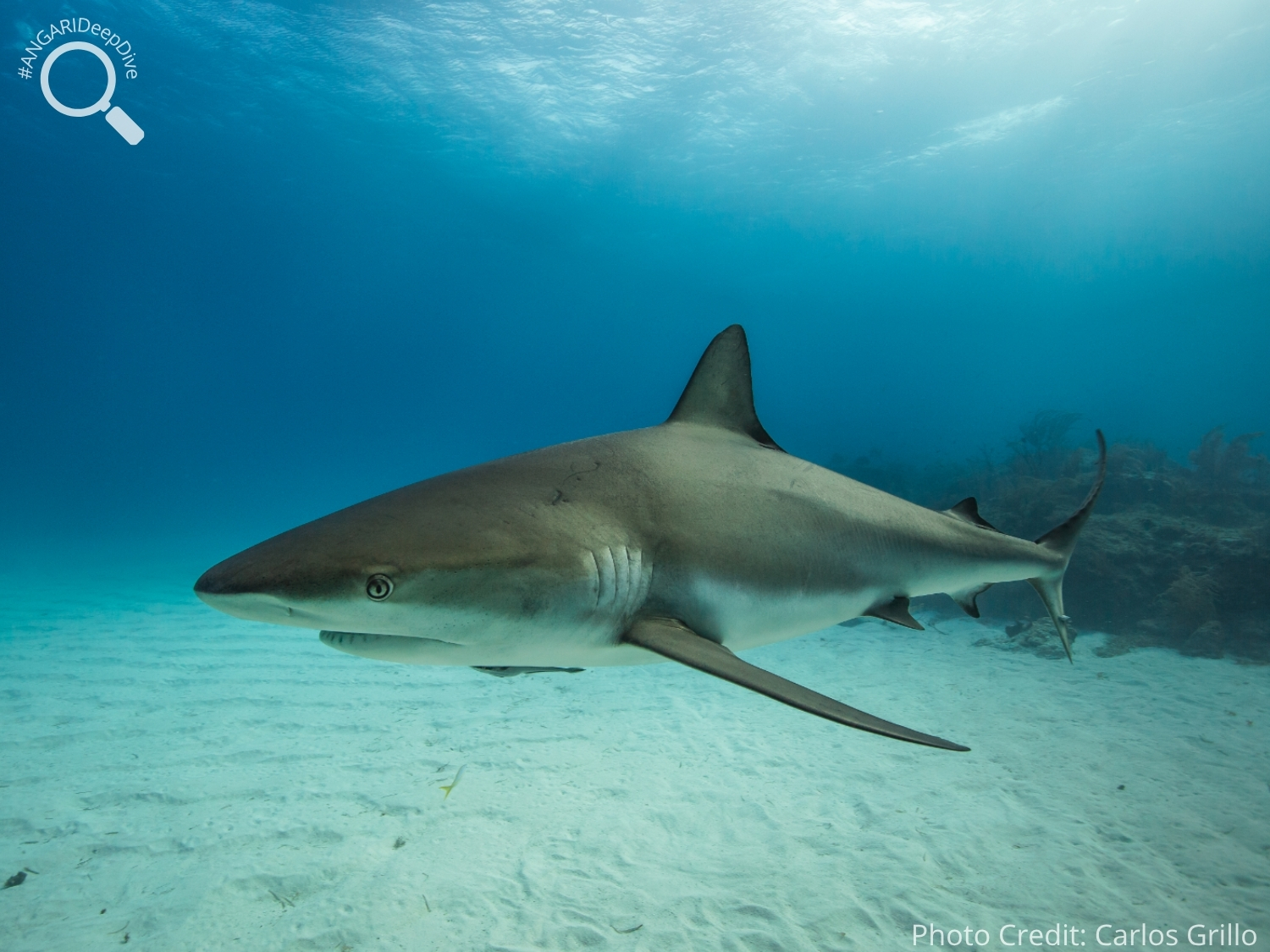Gray angelfish are found on coral reefs in the western Atlantic Ocean and can be identified by their shiny gray body with yellow pectoral fins.

Leatherback Sea Turtle (Dermochelys coriacea)
Leatherback sea turtles (Dermochelys coriacea) are the largest species of sea turtle found in our oceans and have been around since the time of the dinosaurs. Even thought they have been around for an extremely long time they haven’t actually changed or adapted since the Jurassic period. If you live in the Palm Beach area you may be lucky enough to spot one of these magnificent animals nesting on these beaches as it is known that 50% of leatherbacks nest on our beaches between the months of May and July.
#1: Not all sea turtles have a hard shell.
Leatherback sea turtles don’t have a hard shell like all the other sea turtle species. Instead they have a carapace has 7 distinct ridges and is made up of a tough, rubbery skin that contains thousands of small bone plates.

#2: Leatherback sea turtles love to travel!
Leatherback sea turtles travel a vast distance across multiple oceans globally. Compared to all of the sea turtle species they travel the furthest distance between nesting and foraging sites. The leatherback has been known to swim over 10,000 miles each year.

#3: How big is the leatherback sea turtle?
The leatherback sea turtle is the largest species of sea turtle on the planet. On average a leatherback sea turtle can grow to between 4ft and 6ft. The largest leatherback ever recorded was almost 10 feet from the tip of its beak to the tip of its tail and weighed in at 2,019 pounds (916 kg).1
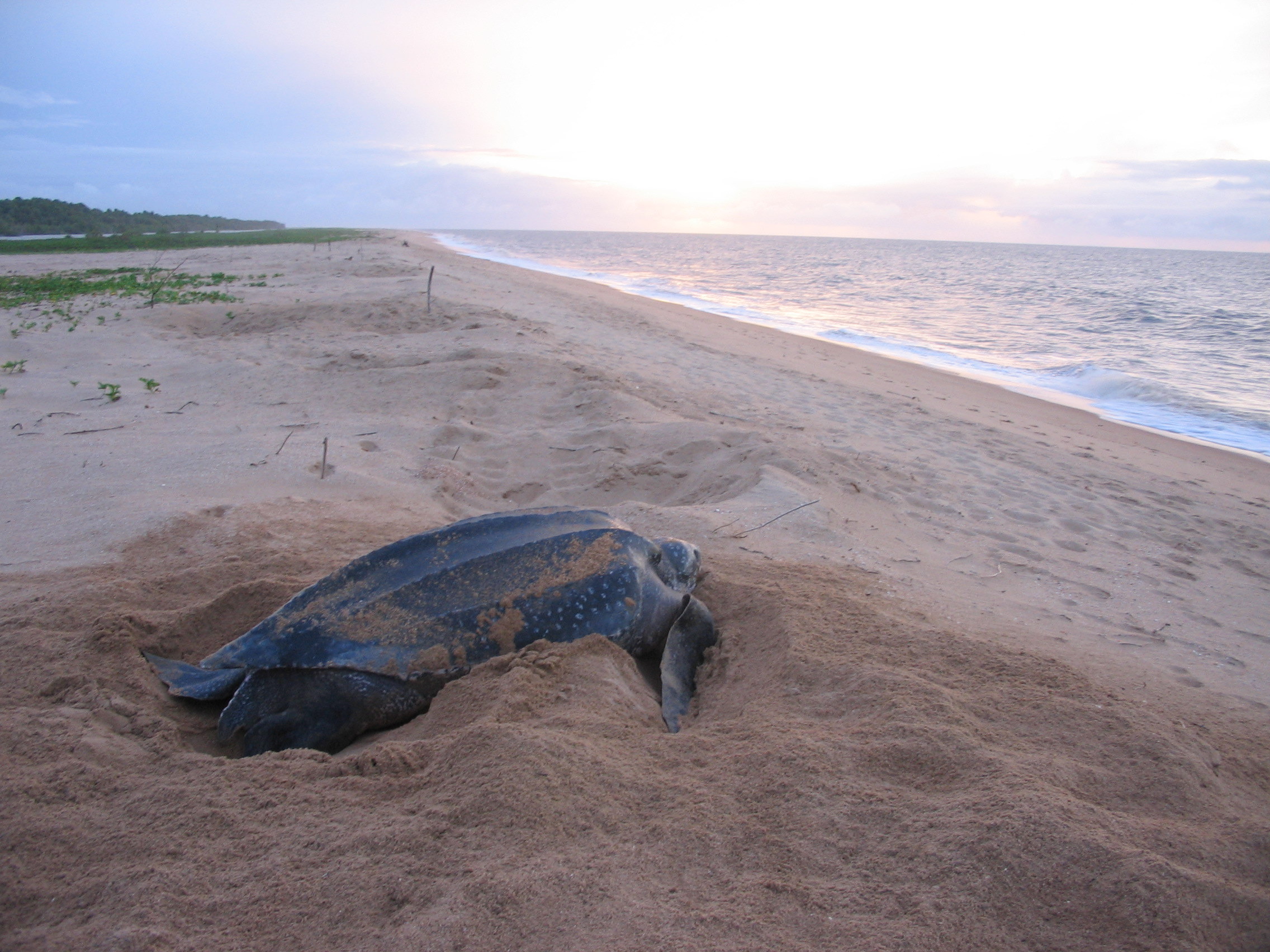
#4: Jellyfish are on the menu for the Leatherback sea turtle.
Leatherback sea turtles don’t have a jaw that allows them to feed on hard-bodied prey. Instead they are adapted to feed on soft-bodied prey, such as jellyfish, because their jaws are sharp edged and their oesophagus have backward-pointed spines that direct prey down their throats.

#5: Leatherbacks need to eat a lot of jellyfish!
Leatherbacks exert a lot of energy travelling for place to place. In order to get the amount of energy needed to sustain the highly mobile life a leatherback can consume 73% of their body weight in jellyfish.
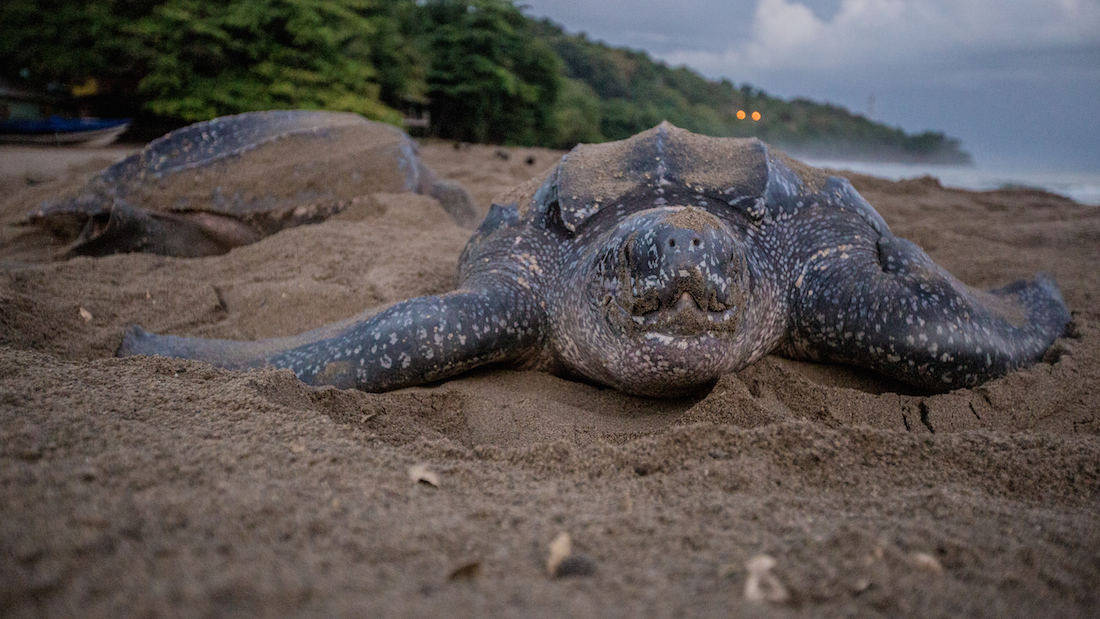
#6: Leatherback sea turtles are dive masters!
Leatherbacks are an extremely large species which allows them to dive to depths of 4,000ft. They are able to dive to these depths because they don’t have a rigid breastbone and their shell can absorb nitrogen which reduces any risk of decompression when they resurface after a dive.

#7: Nesting leatherback sea turtles.
It is a well known fact that female sea turtles return to the beach that they were born on to lay their own eggs. This is the case with leatherback sea turtles however, they don’t always return to the exact same beach that they were born but always return to the same area.
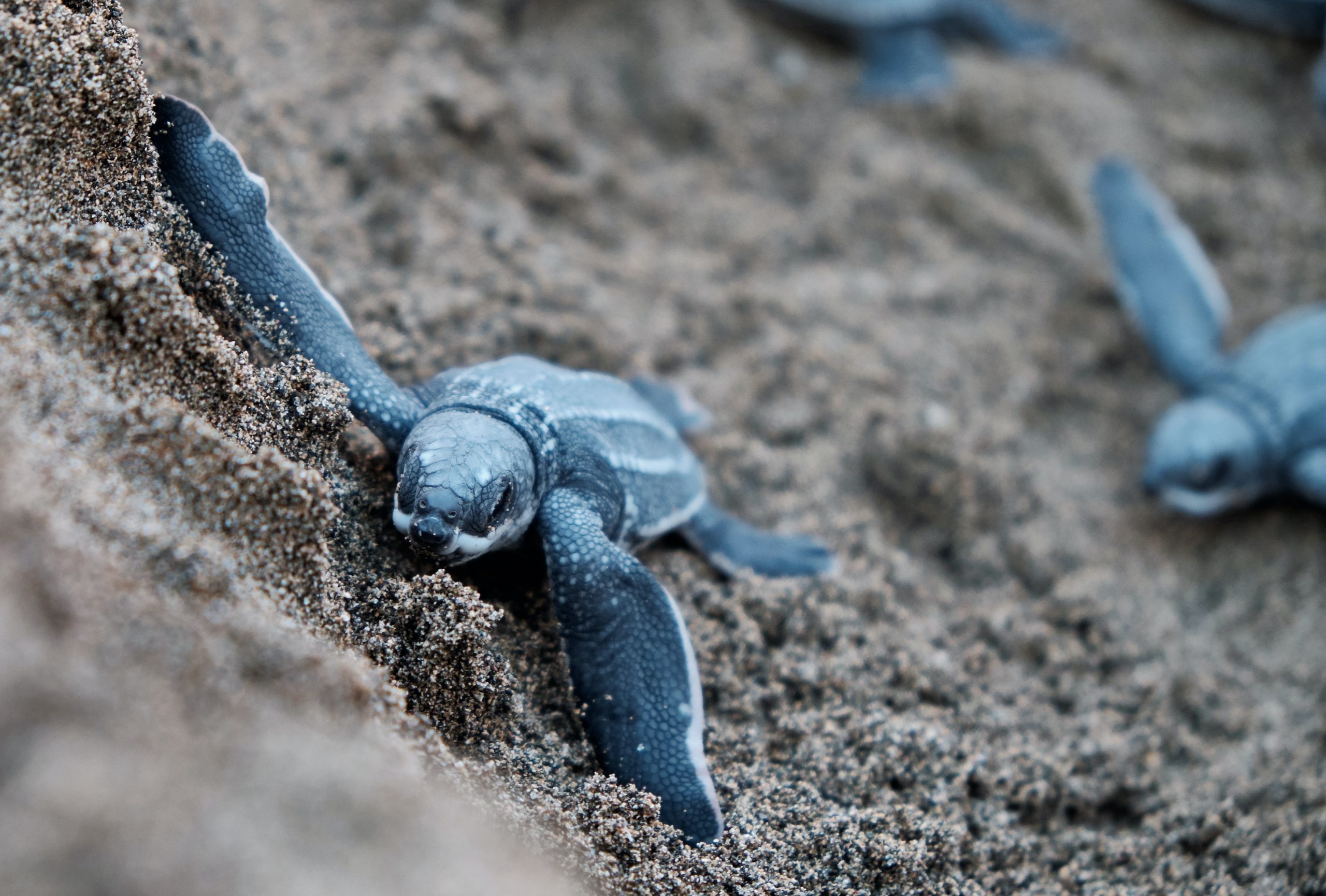
#8: Leatherback sea turtles can thermoregulate!
Leatherback sea turtles have the widest global distribution out of any sea turtle species. They travel through many different oceans and seas which vary drastically in temperature and it is believed that can do this due to their ability to thermoregulate their body temperature and maintain a core temperature of 79°F (26°C).
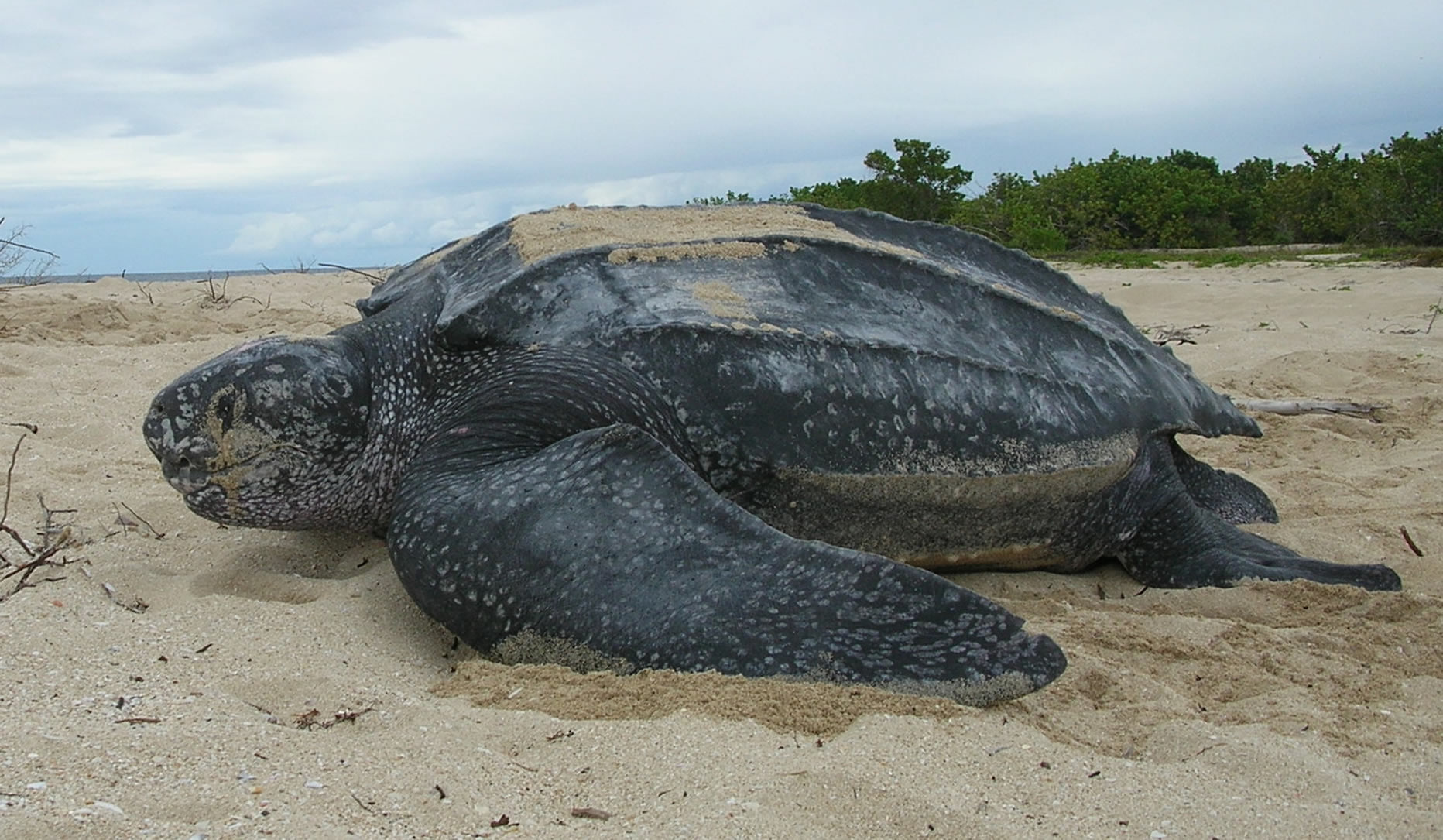
Leatherback sea turtle populations are unfortunately declining and it is estimated that in the past three generations their global population has declined by 40%.2 Reasons for their declining population include; bycatch in fishing gear, direct harvest of eggs and turtles, loss of nesting habitats, vessel strikes, ocean pollution and marine debris and climate change.
If you are in Florida and need to report someone disturbing a sea turtle nest or an injured, dead or harassed sea turtle call Wildlife Alert 888-404-FWCC (888-404-3922) or report it online. Cell phone users can also call *FWC or #FWC, or send a text to [email protected].
Additional Leatherback Sea Turtle Resources:
1. Leatherback Sea Turtle (Dermochelys coriacea) – The National Wildlife Federation
2. Leatherback Turtle (Dermochelys coriacea) – Oceana
Citations:
1 Sea Turtle Conservancy. (n.d.). Information About Sea Turtles: Leatherback Sea Turtle. Retrieved 22 April 2023, from https://www.nationalgeographic.com/animals/fish/facts/manta-ray
2 NOAA. (n.d.). Leatherback Turtle. Retrieved 23 April 2023, from https://www.fisheries.noaa.gov/species/leatherback-turtle


